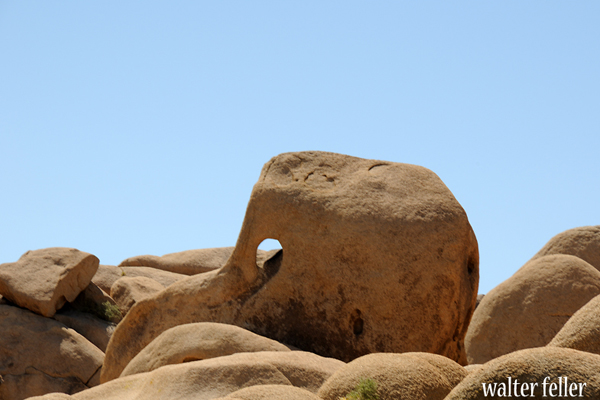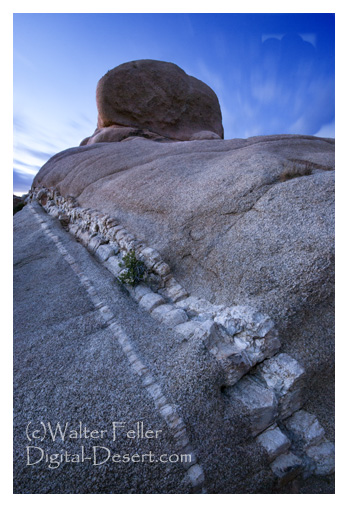Geology of Joshua Tree

Jumbo Rock
Joshua Tree National Park, located in southeastern California, is renowned for its rugged landscape, unique rock formations, and the iconic Joshua trees. The geology of this area is a fascinating blend of geological features and processes, characterized mainly by:
Rock Types:
The park showcases a variety of rock types, including granitic rocks, metamorphic rocks, and sedimentary deposits. The most prominent are the monzogranite formations, which were formed over 100 million years ago during the late Mesozoic era. These granitic rocks were created from molten material that cooled and solidified beneath the surface of the Earth.Geological Structures:
Joshua Tree's landscape is marked by its striking rock formations, including massive boulders, rugged mountains, and complex fault systems. These structures are often the result of tectonic activities along the San Andreas Fault system, which has played a significant role in shaping the region's topography.Erosional Processes:
Erosion has had a profound impact on the park's geology, creating the unique shapes and formations seen today. Weathering processes, particularly those related to temperature fluctuations, water, and wind, have sculpted the rocks into fascinating forms, including the park’s famous arches and domes.Ecological Interplay:
The geological features of the park contribute to its diverse ecosystems. The varied terrain supports different plant and animal communities, with the Joshua tree (Yucca brevifolia) being the most emblematic species, thriving in the Mojave Desert section of the park.Cultural and Historical Aspects:
The geology of Joshua Tree has also influenced human activity in the region, from the Native Americans who first inhabited the area to the miners and homesteaders who came later. The land formations and mineral deposits have played a role in the area's history and cultural development. Overall, Joshua Tree National Park's geology is a dynamic and integral part of its appeal, offering insights into Earth's history, the processes that shape natural landscapes, and the interconnections between geology and biology.Geologic Displays
The park encompasses some of the most interesting geologic displays found in California's deserts. Exposed granite monoliths and ...Rockpiles
The geologic landscape of Joshua Tree has long fascinated visitors to this desert. How did the rocks take on such fantastic shapes? What forces sculpted them? ...Faults in Joshua Tree
North America is moving westward over the Pacific Plate at one or two inches per year. When tension builds in ...Mountain Ranges in Joshua Tree
Within the park there are six distinct mountain ranges: the Little San Bernardino Mountains in the southwestern part; the Cottonwood, Hexie, and ...Geology Tour Road
The Geology Tour Road is an 18-mile, self-guiding driving tour along a dirt road winding through some of the park's most fascinating rockscape. ...White Tank Arch
It is easy to wonder how this strange landscape, with its protruding boulders and ...
